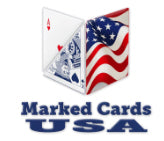Poker card marking has long been a topic of intrigue and mystery in the world of gambling. From casual home games to high-stakes tournaments, the idea of gaining an edge through marked cards has fascinated both players and spectators. But what exactly is poker card marking, and how does it work? In this blog post, we will delve into the nuances of poker card marking and marked poker, exploring the techniques, history, and implications of this clandestine practice.
Understanding Poker Card Marking
Poker card marking involves subtly altering the cards in a deck to make them identifiable to the marker. This can be achieved through various techniques, each requiring a high level of skill and precision. The markings are usually invisible to the untrained eye but can be easily recognized by those who know what to look for.
Common methods of card marking include:
Ink Marking: Special inks are used to mark the cards. These inks can be invisible to the naked eye but visible under certain lighting conditions, such as ultraviolet (UV) light.
Daubing: A subtle substance is applied to the cards, leaving a mark that can be felt or seen when needed.
Scratching or Denting: Small scratches or dents are made on the cards' surface to indicate their value and suit.
Edge Work: The edges of the cards are slightly altered, often with tiny notches or bends, making them identifiable by touch.
The Evolution of Marked Poker
Marked poker has a rich history, evolving with advancements in technology and changes in gambling regulations. In the early days, card markers relied on rudimentary techniques such as smudging ink or creating tiny bends in the cards. As detection methods improved, so did the sophistication of marking techniques.
In modern times, marked cards have become a commercial product, with companies specializing in producing decks that are professionally marked. These decks are often used for magic tricks, training purposes, or in environments where all players agree to their use. However, their use in competitive play remains illegal and unethical.
The Ethics and Legalities of Marked Cards
Using marked cards in a poker game is generally considered cheating and is illegal in most jurisdictions. Casinos and poker rooms employ stringent measures to detect and prevent the use of marked cards, including frequent deck changes, thorough inspections, and the use of technology such as UV light scanners.
Despite the legal and ethical implications, the fascination with marked cards persists. They are often featured in movies and literature as tools of deception and intrigue, adding to their mystique.
The Modern Uses of Marked Poker Cards
While marked poker cards are primarily associated with cheating, they have legitimate uses in various fields:
Magic and Illusions: Magicians use marked cards to perform sleight-of-hand tricks and illusions, creating captivating performances for their audiences.
Training Tools: Aspiring poker players sometimes use marked cards to practice reading opponents and understanding game dynamics.
Collector's Items: Some marked decks are produced as novelty items or for collectors, celebrating the history and craft of card marking.

